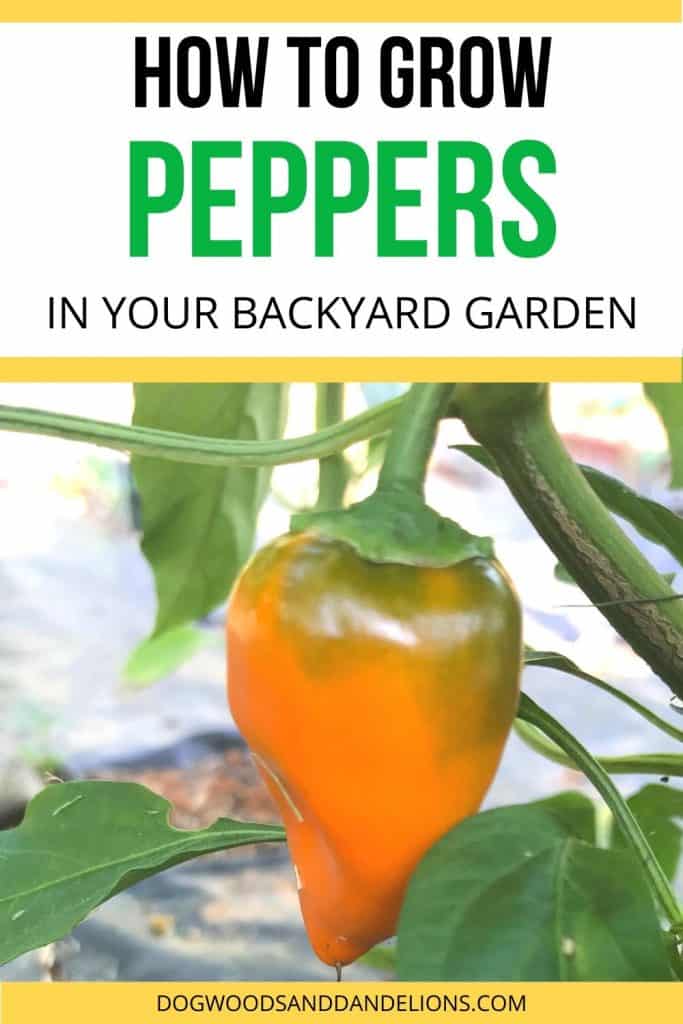How to Grow Peppers
Preview: This post details how to grow, harvest, and preserve bell peppers and hot peppers.
There are many types of peppers you can grow in a backyard garden. From mild bells to super hot ghost peppers, there are so many more varieties available to grow than you will ever find in your local grocery store. As a plus, most peppers are relatively easy to grow from transplants.
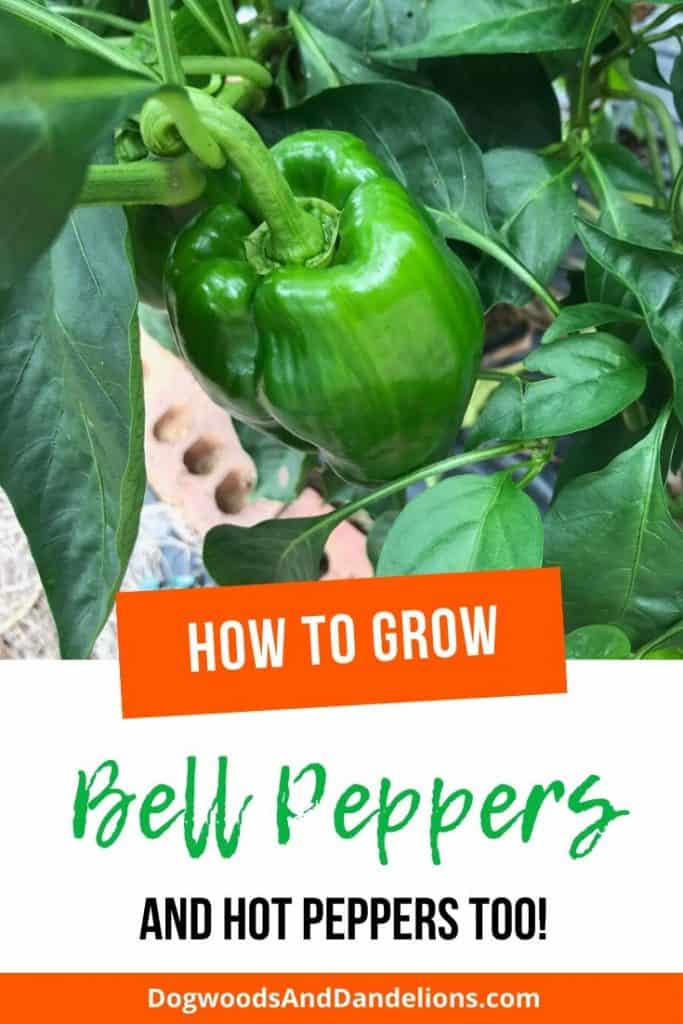
Affiliate Disclosure: Please note that some of the links in this article may be affiliate links and I may receive a small commission if you purchase something through a link. It will not change your cost. As an Amazon Associate, I earn from qualifying purchases. For more information, see my disclosures page.)
Types of Peppers to Grow
From bell peppers in a variety of colors to the hottest peppers you can imagine, you can grow peppers in almost any warm location. Checking out any seed catalog will leave you astounded at the number of peppers available.
There are mini peppers (a.k.a “lunchbox” or “snack” peppers, sweet peppers, hot peppers, extremely hot peppers, and even ornamental peppers. Peppers come in all kinds of different colors, shapes, and sizes too.
How to Plant Peppers
All types of peppers need to be planted after your last expected frost date in the spring. Peppers like warm weather so it is often advised to wait at least two weeks AFTER your last frost date to plant them. Any frost, no matter how light, will kill pepper plants.
If you are a beginning gardener, I highly recommend buying transplants for your peppers. Peppers are notoriously difficult to start from seed.
If you choose to start them from seed, they need to be started indoors 8-10 weeks before your last frost date. They can take up to two weeks to germinate. It is not recommended to try to start them from seed in the garden.
When planting pepper transplants in the garden, the warmer the soil the better. Peppers thrive in black plastic, especially if put out before the soil has had a chance to warm up. (The black plastic warms the ground up sooner and holds the heat in.)
Peppers need to be spaced about a foot apart. They like to “hold hands” in the garden, meaning their leaves like to touch other peppers. In a square foot garden, this means you can plant 1 pepper per square. You can also grow peppers in containers.
Peppers like a long growing season. If your growing season is shorter, you will have better luck choosing smaller varieties like the “lunchbox” or “snack” peppers as smaller peppers ripen quicker.
Pepper plants benefit from being grown in a cage to support the plants when they are heavy with fruit. Without some support, the branches may break, ruining the peppers on that branch. Cages are especially important in windy locations because the wind increases the stress on the branches.
How to Harvest Peppers
You can harvest all peppers while they are green as soon as they are big enough to eat. However, most bell peppers will improve in flavor if allowed to ripen to red, (or yellow or orange, or even purple!). Colored bell peppers are much sweeter than green bell peppers.
On the other end of the spectrum, hot peppers like jalapenos and habaneros are hotter when red. It is a good idea to pick some peppers while they are green. They will continue producing fruit much longer. If you wait until all the peppers turn colors, they may stop setting new fruit.
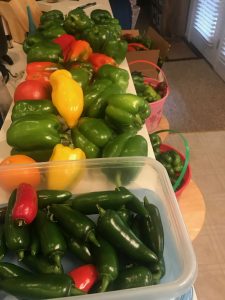
When picking peppers, be sure to cut the peppers from the plant, don’t pull them off. Otherwise, you may pull an entire branch off the plant. In the fall if frost is threatening, pick all the peppers.
Any that are starting to turn colors, can be left on the counter for a few days and they will continue to turn. The green ones can be eaten, stored in the refrigerator for up to two weeks, or frozen.
How to Preserve Peppers
Peppers freeze fairly well, though they aren’t suitable for fresh eating. After being frozen, they are best used in cooked dishes as they become limp after freezing.
Peppers are especially susceptible to freezer burn, so be sure to remove all the air from your freezer bags. I don’t recommend freezing them in containers as they will get very icy.
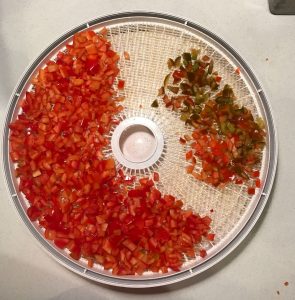
Peppers are also very easy to dehydrate. Chop them how you will use them later (in strips or dice them) to dehydrate them. Dehydrated peppers work great in soups and stews in the winter.
Anytime you are working with hot peppers, it is a good idea to wear gloves. The capsaicin in them can remain on your hands even after multiple washings.
One touch to the eye will be very painful. The capsaicin can also cause your hands and fingers to burn if you are exposed to a lot, such as when you are chopping lots of hot peppers to freeze or dehydrate.
I also freeze jalapeno peppers whole to use in fresh salsa all winter long. I pull one out, let it thaw briefly on the counter, and then chop it for my salsa.
However, my favorite way to preserve peppers is to roast them. You can roast peppers of any type and any color. You don’t even need a gas flame to do it!
I’ve got an entire post dedicated to roasting your own peppers. Once roasted, I freeze them in individual bags to use all year long. Yum! (In the winter, a grilled cheese sandwich with roasted red peppers from your garden is so delicious.)

Pests and Diseases
In my Zone 7 garden, peppers are relatively pest and disease free. I find the occasional tomato hornworm on them but that is usually about it.
Other areas of the country tend to have more problems with insects such as aphids and leafhoppers. Aphids and leafhoppers suck plant juices from the leaves of peppers and they can also transmit diseases to the pepper plants. Both leafhoppers and aphids are best controlled with an insecticidal soap.
Peppers are also susceptible to blossom end rot, just like tomatoes. This is usually a result of lack of calcium in the soil or a low soil pH that won’t allow the plants to absorb the calcium.
You can add calcium to the soil when planting peppers if this is a common problem. If you notice it during the growing season, the best tactic is to use a calcium spray to get a handle on the problem.
It is also best to try to water the plants regularly. Uneven water can make the problem of blossom end rot even worse because the plants can’t take up the available calcium without enough water.
There are also several diseases that affect pepper plants such as bacterial leaf spot, and many of the tomato viruses. These diseases can be difficult to control once they get into your garden.
If you have had problems in the past with tomato or pepper viruses, I recommend looking for disease-resistant varieties.
Favorite Varieties
Bell Peppers
King Arthur is an early variety that has very large peppers that turn red quickly. The plants are compact making them suitable for growing in containers. They are also very disease resistant, making them an excellent choice for gardeners who have experienced diseases on their peppers.
I am not a fan of purple peppers, however, lots of people recommend Purple Beauty as the best purple pepper on the market. They are another compact variety, growing only about a foot and a half tall. This is an open-pollinated variety.
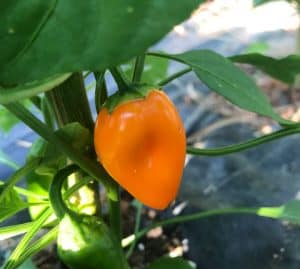
For “lunch box” or snack peppers, I have had great success with Yum Yum. These grew so fast and produced so many peppers last year, I could barely keep up.
This variety is thin-walled and produces fruit that is 2 1/2″ long. The peppers range from red to yellow to orange. With very few seeds, these are ideal for eating fresh, but they are also suitable for sauteing.
Flavor Burst is an interesting pepper that starts off lime green in color. It matures into a deep yellow-orange and has a hint of citrus flavor to it.
This year I am trying several new colored peppers. I am growing Orange Blaze and Yellow Monster and an unnamed white variety. I usually purchase my yellow and orange peppers as transplants, but this year I decided to try some from seed.
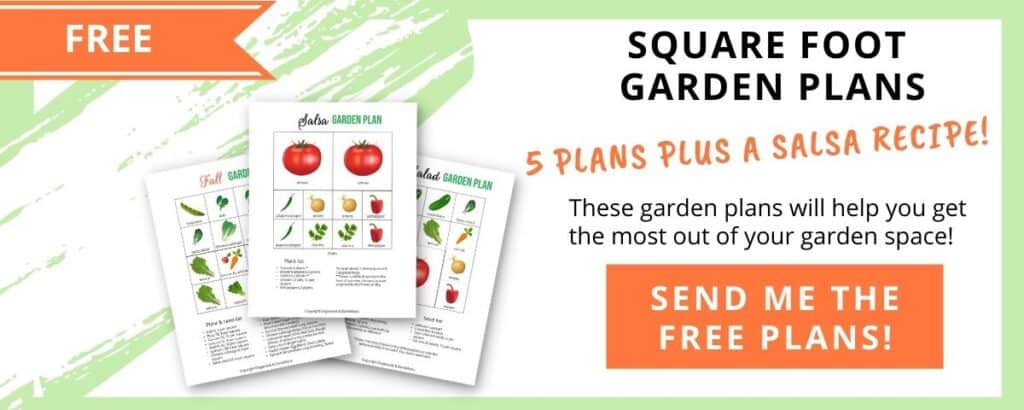
Hot Peppers
I like a good pepper with some heat, but it still has to have a great flavor. My choices are still on the milder side of hot peppers, so you’ll have to look elsewhere for super hot pepper recommendations. (No Ghost Peppers for me.) Keep in mind that your growing conditions will also have some influence on how hot your peppers become.
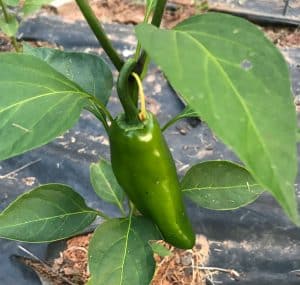
Early Jalapeno is a stocky jalapeno pepper that grows about two feet tall. This variety tends to set fruit earlier than others so it is perfect for shorter growing seasons, but also works well for gardeners with longer growing seasons. This variety produces an abundance of peppers that turn red when fully ripe.
My Mom grew the Fooled You Jalapeno last year. It looks like a regular jalapeno pepper with the same flavor but without the heat of a regular jalapeno.
Anaheim Chili peppers are mildly hot, and are typically the chili used for Chile Relleno. They are also used in many Mexican saauces.
Ancho is a poblano type pepper that can grow to almost the size of a bell pepper. These are usually used as a stuffing pepper. They are generally mild and stay green but eventually will turn red.
Hungarian Yellow Banana or Hungarian Yellow Wax is a banana-looking pepper that grows about 6 inches long. They start out yellow but turn red quite quickly. These are great for pickling. I grow some of these every year for my husband.
I’ve barely touched the surface of all the available peppers on the market today. I encourage new gardeners to buy a couple of plants of their favorite type to start with. After a year or two, feel free to experiment with other varieties as space allows.
Related Posts
- How to Dehydrate Bell Peppers
- How to Grow Green Beans
- How to Grow Squash and Zucchini
- Growing Vegetables in Containers
